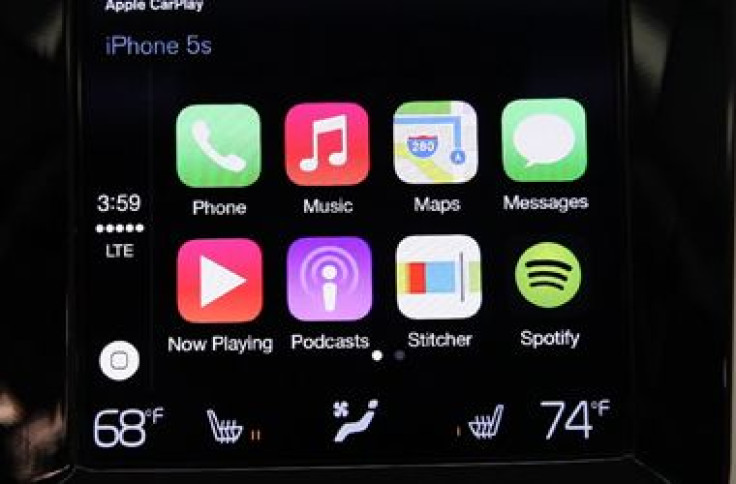Apple CarPlay Races Ahead Of Google And Microsoft Competitors [VIDEO]

Mobile-phone technology has been making its way into cars for several years -- Bluetooth connections to smartphones for music streaming, phone calls, etc. -- but it’s never really been a cohesive system. More often than not, you’d still need multiple parts of the car to run and manage any features you wanted to use, which is a distraction.
All three of the major mobile-operating-system companies (Apple, Google, and Microsoft) have discussed integration with vehicles, but so far only one -- Apple -- has delivered a comprehensive package. Their system, dubbed “CarPlay” brings a suite of native iOS applications onto a vehicle’s infotainment center -- it’s similar to AirPlay. If you’re already familiar with Apple’s iOS7, then CarPlay’s interface will inspire déjà vu.
“You just take your iPhone5, 5s, 5c running iOS 7.1, plug it into USB and then you have access to the CarPlay system,” said Ed Langstroth, a product marketing manager for Apple.
One of the key elements to CarPlay is Siri, Apple’s voice-based assistant. You can use her to control just about every aspect of the system, including incoming and outgoing texts. While that in itself is a nice feature to have standard in a car, it’s also worth noting that CarPlay will only read messages back to you, like a human personal assistant; no text is displayed on the screen to take your eyes away from the road.
In addition to the standard Apple fare, mainstay media streaming apps like Spotify, Pandora and IHeartRadio are also supported; compatible apps installed on the host iPhone will automatically transfer to the CarPlay system.
Apple has partnered with a few manufacturers already, namely Ferrari, Mercedes-Benz, Hyundai, and Volvo, to integrate the CarPlay system in new models. Volvo had a finalized unit on display at the New York International Auto Show, set to appear in the 2015 Volvo XC90 as part of Volvo’s revamped infotainment system.
Volvo did mention that CarPlay is “futureproof”; that is, subsequent updates to Apple iOS will be tied to one kind of phone (the iPhone) and CarPlay will be continuously supported. However, Volvo (like most automakers) remains platform agnostic; Apple is the first one to come to the game ready to play, so it made sense to work with them before anyone else.
Google has their own integrated system, but nothing complete was available at the New York Auto Show. Details are still a bit scant, but we expect the integration to be similar to CarPlay. What remains to be seen is how an Android-based system will handle devices running different versions of Android software.
Microsoft was also absent; after its tagline was recently dropped from Ford’s “SYNC” system, it would seem Microsoft has thrown all of its automotive efforts into developing its own in-car infotainment system, linked with Windows Mobile. The company showed off a demo of the system earlier this month, but nothing was available to see in New York.
Apple’s gotten the jump with CarPlay, but most manufacturers aren’t committed to any specific operating system. Don’t be surprised if this head start fails to guarantee domination for Apple’s in-car system.
© Copyright IBTimes 2024. All rights reserved.












